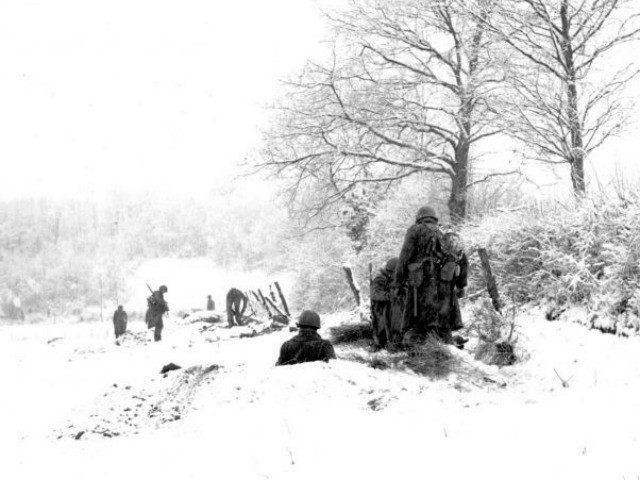Editor’s Note: The German Army launched a surprise attack on the Allied line in the Ardennes forest 70 years ago in what would become one of the most important battles in human history. James A. Warren of the Daily Beast writes about Hitler’s failed gamble at the Battle of the Bulge.
As early as September 13, 1944, General Dwight David Eisenhower, Supreme Commander of Allied Expeditionary forces in Europe (SHAEF), confided to his boss in Washington, Army Chief of Staff George Marshall, that the “termination of the War in Europe might be expected by the end of 1944.” Ike was not a naïve man, and his was not a naïve statement.
By the time Eisenhower wrote that letter, the formidable German war machine had been badly mauled on both the Eastern and Western fronts. The Normandy campaign had reached its climax in an orgy of destruction when the Allied armies and air forces trapped the retreating German divisions in the Falaise pocket, where 70,000 Wehrmacht troops were killed or captured. The Normandy campaign as a whole had cost the Reich something like half a million combat-hardened men, 1,500 tanks, and 20,000 other vehicles.
In the east, Hitler’s losses were far worse. Soviet forces had deftly enveloped the German 4th and 9th Armies, annihilating some 28 divisions. As Peter Caddick-Adams observes in Snow & Steel: The Battle of the Bulge, 1944-45, his powerful and detail-packed new history of the last great German offensive of World War II, losses in the East amounted “to a military catastrophe double the size of Stalingrad, and in terms of materiel and losses of experienced man power ranked as the most calamitous setback of the war, one from which the Wehrmacht would never recover.”
Read the rest of the article here.

COMMENTS
Please let us know if you're having issues with commenting.